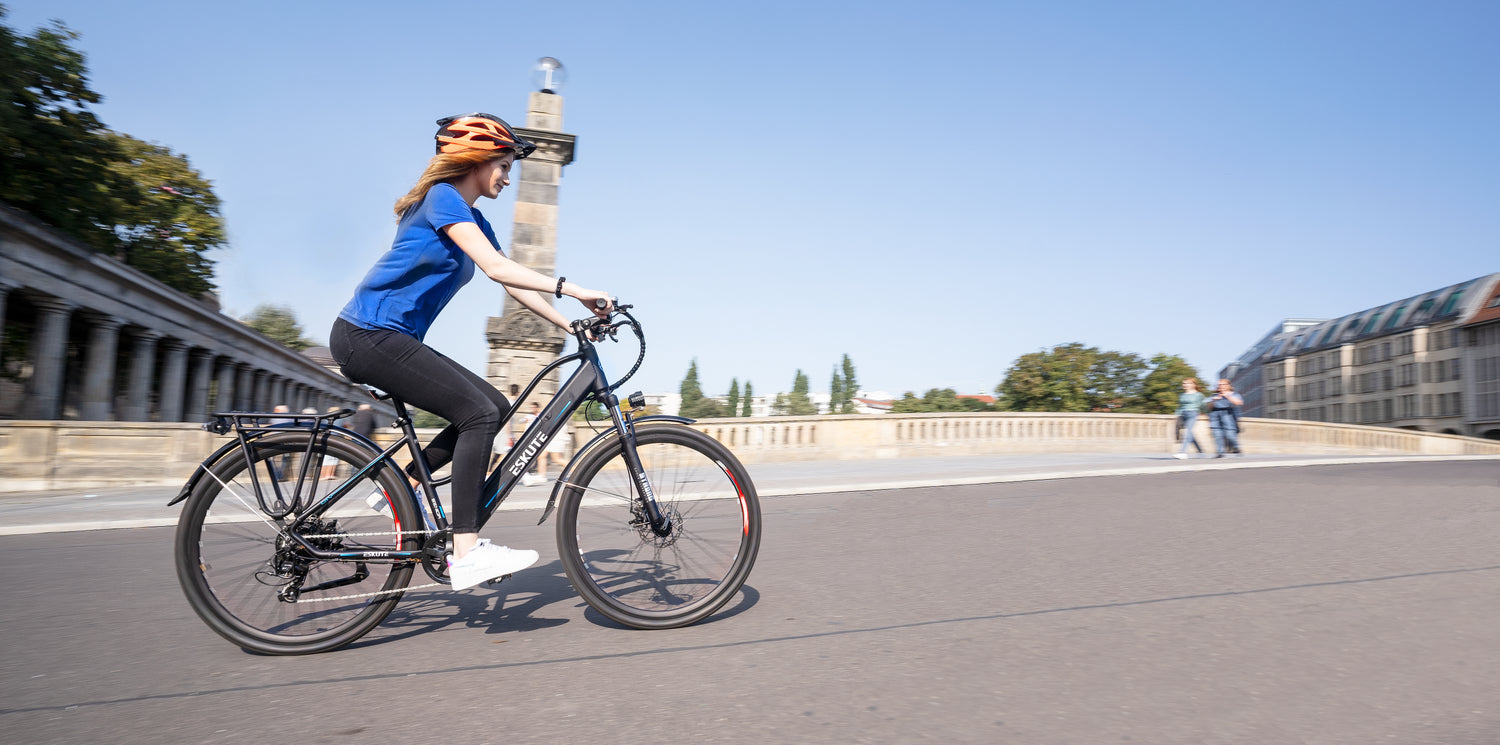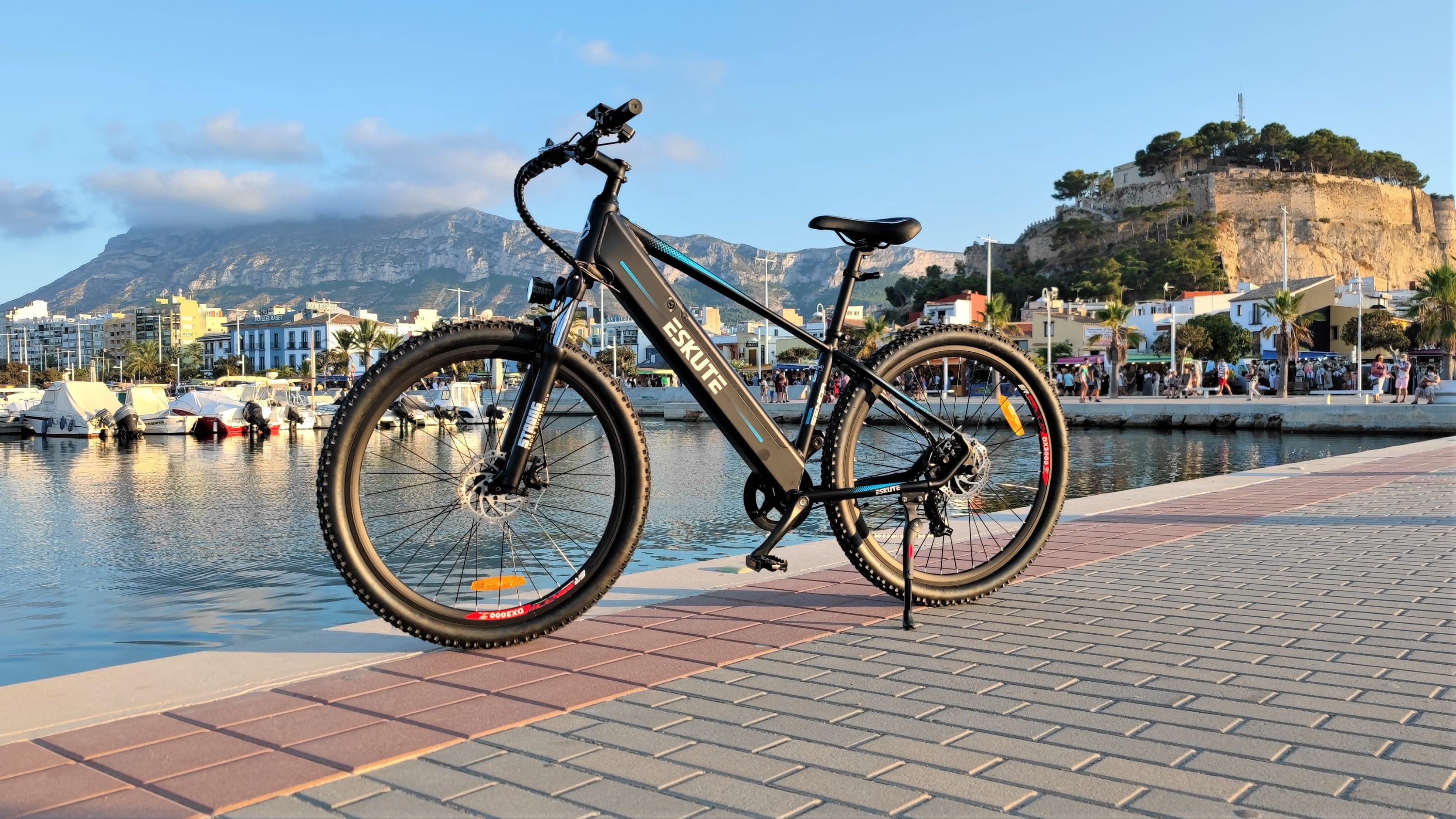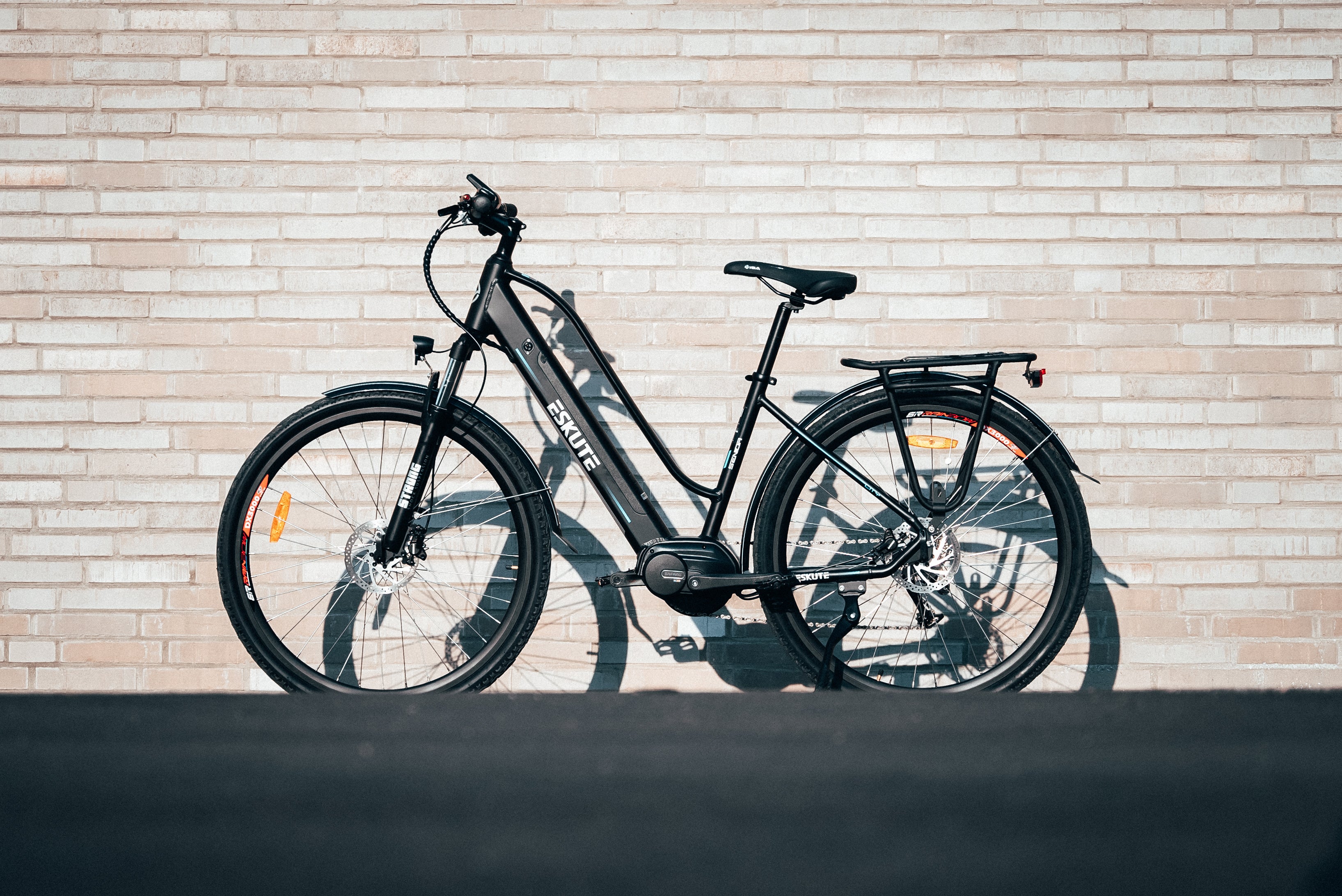Navigation
Innovation in the e-bike industry has skyrocketed in the past several years. Previously, electric bikes were clunky machines that struggled to work reliably and look streamlined. But nowadays, many sleek e-bikes have such well-integrated motors that they are almost indistinguishable from normal bikes. For a long time, e-bike companies depended on motors placed in the wheel hubs but there’s a competing design on the market now: mid-drive motors. E-bike manufactures can choose between hub-drive motors or the newer mid-drive model— motors placed between the pedals in the middle of the bike. There are pros and cons to both designs so let’s take a closer look into why higher-end electric bikes utilize mid-drive motors.
DIFFERENCES BETWEEN HUB-DRIVE AND MID-DRIVE
Electric Hub-Drive Motor
Almost all e-bikes use either a hub-drive or mid-drive motor system. Hub-drive technology has been around for a while. It positions the electric motor inside the hub of either the front or rear wheel. The oversized hub is connected to a large battery on the frame by some clever wiring. The extra weight can significantly affect the handling of the bike. Front hub-drives make the bike feel like it is being pulled along whereas rear hub-drives make the bike feel as though it is being pushed from the back. This novel sensation can be fun, but some people find it unnatural. Any normal bike can convert to an ebike simply by installing a new wheel with a hub-drive, making it an attractive option for retrofitting. The hub-drive system is an older technology so it is generally cheaper to produce than mid-drive motors.
Friction-Drive Motor
Another type of electric bike motor is a friction motor. This less common system spins a roller that presses up against the rear tire, adding some oomph. These were some of the earliest electric motors mounted on bicycles but only have a small usage today. They contact either the tire tread or sidewall so can cause accelerated wear. This creative option has been overshadowed by wide use of hub-drives and the newer mid-drive options.
Mid-Drive Motor
Mid-drive motors sit between the pedals in the middle of the bike’s frame. More and more companies are manufacturing this kind of motor because of its balance and efficiency advantages. Hub-drives spin the wheel whereas mid-drives add power directly to the drivechain. The central positioning of the motor maintains a natural ride feel and a low center of gravity similar to a normal bike. While there are some stand-alone mid-drive motors available, most come preinstalled in a specially designed ebike frame. Mid-drive motors have a relatively high price tag but a recent influx of manufactures have caused production costs to fall. Currently, mostly high-end brands are using these motors to power their ebikes— but what’s so special about mid-drive motors anyway?
BETTER BALANCE
Mid-drive motors offer a familiar ride feel by maintaining a regular weight balance and a low center of gravity. Placing the motor in the middle of the bike avoids making the front or rear too heavy and manipulating the balance. The better balance of a mid-drive electric bike might not be apparent on flat ground but becomes crucial when riding on technical or steep terrain. Extra weight at the front from a hub-drive can make steering cumbersome and that’s not what you want when navigating through rocky trails or slippery mud. A heavy rear can be a liability during steep climbs when the front end is searching for traction and at risk of lifting off the ground.
Ride Quality Luxury
Cyclists that ride rough trails demand this kind of safe and favorable weight balance. Serious riders are more willing to spend some extra cash on these benefits. Mountain bikers often put mid-drive motors at the top of their priority list during their search for a new ebike. Dedicated riders looking for the best ride quality provide an ample customer base for mid-drive motor bikes. With plenty of demand out there, high-end brands make sure to carry a line of ebikes fitted with top quality mid-drive motors.
LOWER RESISTANCE = HIGHER EFFICIENCY
Compared to hub-drive motors, mid-drives operate much more efficiently meaning you can ride farther on a single charge. Hub-drives are typically powered by electromagnetic induction, meaning a current runs through a magnet at the center of the motor. The stronger the current, the faster the system spins around the core, and the higher the speed. But this simple system leaks energy to rotational friction and the motor gets hot. Normally, hub-drive motors are only able to convert about 75% of the electrical energy into the kinetic energy that moves the bike. And even when you aren’t using the motor, there is always a bit of magnetic resistance in the hub.
Mid-drive motors function a bit differently. The electric motor generates torque which turns a driveshaft connected to the bike’s crankset. There is less internal friction inside the mid-drive system so high-end motors can covert around 90% of the electrical energy into impressive pedal power. There’s no magnetic resistance so pedaling with the motor switched off isn’t a problem.
BETTER FOR STEEP CLIMBS
The main reason behind the high performance of mid-drive motors is its synergy with the bike’s gearing system. Just like how cyclists change gears in order to better climb a hill, so too do electric motors. To maintain efficiency, it’s important for motors to operate within a certain rpm range. Mid-drive motors are connected the bike via the drive chain so a shift of the gears changes the motor’s rpm too. The motor leverages that link in order to stay at high rpms that are proportional to the natural pedaling cadence of the rider, around 60 to 100 rpm.
Advantages When The Going Gets Rough
The largest advantage of always operating in an ideal rpm window is high efficiency on steep terrain. Steep gradients slow down the rotation of the motor and if there isn’t enough torque, energy is wasted through heat. If the motor can’t handle the added stress, it can lead to a temporary system shut-off. Hub-motors don’t have the capability to change gearing while going uphill so they become less efficient the higher the gradient. Mid-drive motors adjust their rpms in order to provide larger torque on sloped terrain. This quality might not be necessary for the casual rider, but mountain and road riders that attack large hills will want that extra horsepower. In order to keep up with demand for bikes that perform well in all challenging conditions, the higher-end ebike brands outfit their bikes with mid-drive motors.
LOTS OF WHEEL AND ACCESSORY CHOICES
Streamlined Look
The mid-drive’s intelligent positioning offers a neater look and better range of component compatibility. Most ebikes with a mid-drive motor have a frame specially designed to fit the motor. The smart integration tucks away the beefy motor and flows nicely up to the battery placement on the downtube. Sometimes it’s hard to immediately tell that a bike is actually an electric bike! Bike manufacturers take design aesthetics seriously so mid-drive motors are an elegant solution to incorporating power that don’t sacrifice on looks.
Wheel Compatibility
With no hub motors fixed to the wheels, mid-drive systems allow for the rider to choose any wheelset they wish. Many cyclists want complete freedom to choose the wheels they match with their bike. Hub-drive motors come pre-installed on select wheels and are difficult to retrofit to other rims. A mid-drive motor tucked away in the bottom bracket avoids the mess of wheel compatibility.
Smart Work-Around The Dreaded Flat TireMid-drives also help out in the unfortunate situation of a flat tire. Hub-drives have complicated wiring to the battery that must be disconnected before the wheel can be removed properly. This process is the last thing you want when you are stranded with a puncture! Hub-drives can also complicate fixing a broken or bent rim. Replacing the rim and replacing the spokes to such a specific hub can be a complex and expensive process.
Smooth Torque Operator
Torque sensors are a common element of a mid-drive system. These sensors monitor the amount of force a rider exerts when starting to pedal, allowing the motor to accelerate smoothly. The advanced technology avoids abrupt lurches forward when starting from a stopped position. Alternatively, cadence sensors only detect when you start to pedal and can engage suddenly. Torque sensors make the acceleration and straight-line speed on an ebike feel as natural as possible. High-end bikes increase ride comfort and predictability by integrating torque sensors.
LONGER LASTING
Ebikes protect their most important asset with robust housing and waterproofing in order to ensure a long life for the motor. All the magic of a mid-drive motor occurs internally so there are plenty of seals, insulation, and layers of defense to keep out dust, water, and grime. That said, make sure to never pressure wash your ebike while cleaning— a gentle spray-down with a hose will do the trick. Mid-drive motors are typically manufactured with higher quality components that are less likely to malfunction or break. The cooperation with the bike’s normal gearing encourages the motor to stay operating in a healthy rpm and torque range so as not to stress the internal parts. There is less of a chance that the motor overheats due to strain on steep terrain. Opting for a mid-drive motor will avoid large repair bills in the future and keep you riding for longer.
ANY CONS? THEY’RE ALREADY FIXING THEM
Snapping The Chain… A Deal Braker?
One of the biggest critiques aimed at mid-drive motors is the large force applied to the chain. Mid-drives transfer the converted kinetic energy directly to the chainring and chain. Paired with the usual force of the rider pedaling, that can sum to quite a bit of strain on the chain. Many ebike riders have suffered a broken chain in the middle of a ride. These unfortunate moments are more likely to occur while climbing steep sections of trail. Riders often assume a standing position so their full body weight combines with the power from the motor, which can snap a chain. This is one of the most severe mechanical issues that can happen in the middle of a ride. However, this problem is occurring less and less. Bike brands have already started to equip ebikes with beefier chains or a stress-relieving cog in order to relieve chain strain.
Frame Designs And Hub-Drive’s Zip
Another cited downside to the mid-drive motor is the restrictive frame options. Mid-drives are difficult to mount on your existing bike so riders usually have to purchase a whole new bike if they want to make the switch. Hub-drives, on the other hand, are an easy swap of the wheels and off you go! The natural balance and ride feel of mid-drive motors is not always a big plus. Many casual riders enjoy the zippy feel and thrilling acceleration offered by hub-drive systems. For the wider market, though, high-end bike brands increasingly opting for mid-drive motors to power their fleet.
MID-DRIVE’S FUTURE
Mid-drive motors arrived late to the ebike party, but have started to outperform their hub-drive counterparts because of the many advantages explained above. Industry-leading manufacturers such as Bosch, Yamaha, and Bafang produce highly efficient mid-drive motors that have captured the attention of ebike brands. Most of the North American and European bike makers have already made the switch to utilizing mid-drive motors. Analysts predict that hub-drive systems will continue to lose ground to the better integrated alternative. But production costs continue to be relatively high for mid-drive motors. High-end bike manufactures are willing to invest the extra cash on the electric motor because their customers prioritize quality over affordability. But we predict that the next few years will witness mid-tier and entry-level ebikes being outfitted with mid-drives too. The impressive mid-drive technology is sure to stick around and continue pushing the limits of ebikes.
MID-DRIVE IS HERE TO STAY
The diversity offered by the ebike market today ensures that there is an ebike out there for everyone. Electric bicycle technology continues to innovate at a breakneck pace and has slingshot mid-drive motors into their favored position by high-end bike manufactures. The impressive capabilities of mid-drive systems show that ebike adventures are well within grasp— just a comfortable reach to the handlebars.











Leave a comment
This site is protected by hCaptcha and the hCaptcha Privacy Policy and Terms of Service apply.